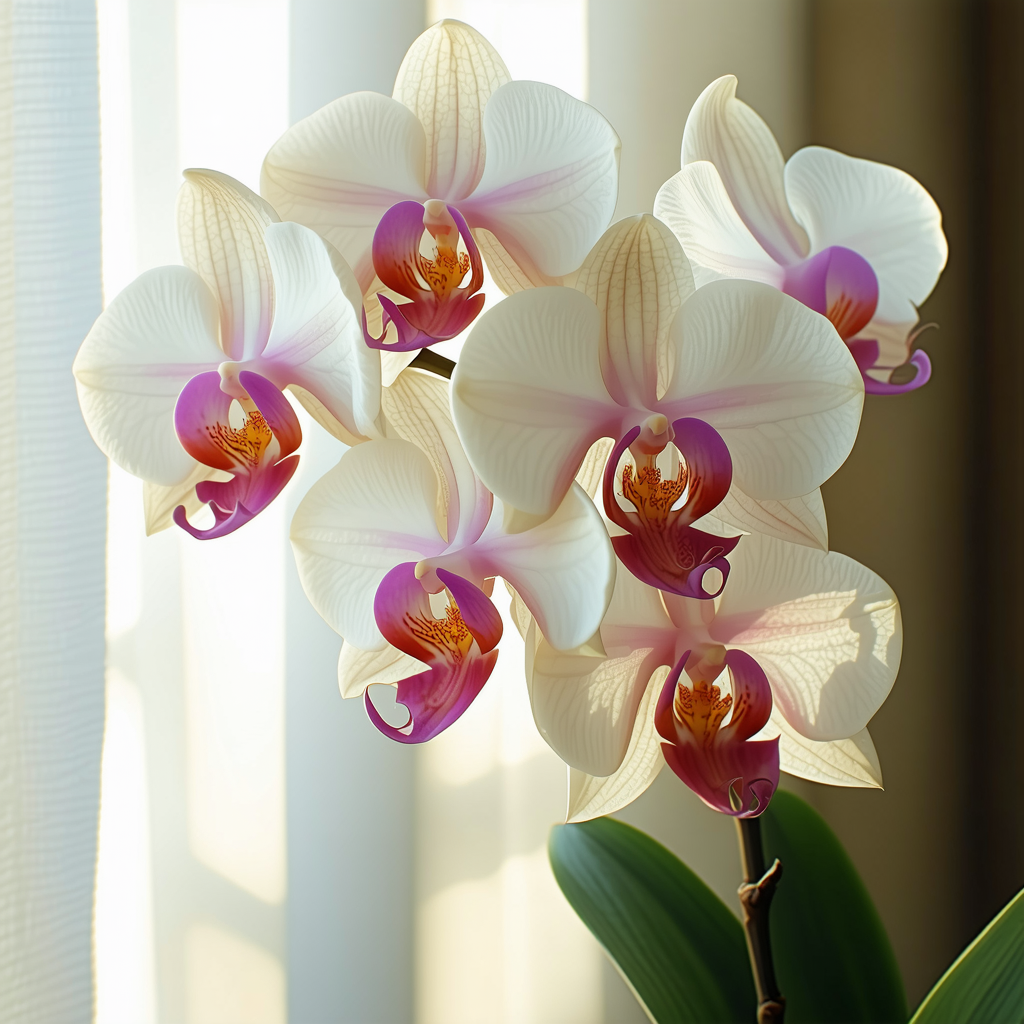The Enchanting World of Orchids: A Comprehensive Guide to Cultivating Beauty
Orchids are often considered the crown jewels of the plant world due to their exotic beauty, diverse species, and intriguing biology. Native to a wide range of habitats from tropical rainforests to arid deserts, these remarkable flowers have captivated botanists, horticulturists, and flower enthusiasts alike for centuries. This article will delve into the fascinating universe of orchids, covering their history, types, cultivation tips, care requirements, and symbolic meanings.
A Brief History
The story of orchids dates back millions of years, with fossil records indicating their presence in ancient times. Orchidaceae is one of the largest families of flowering plants, consisting of approximately 28,000 species spread across five continents. The allure of these flowers can be traced to their extraordinary forms and colors, which have inspired artists, poets, and scientists throughout history.
In Europe during the 18th century, orchids became highly sought after by collectors, sparking what is known as “Orchidelirium,” a period marked by intense passion for acquiring rare specimens. Today, orchids continue to be popular in horticulture and are widely grown both indoors and outdoors.
Types of Orchids
Orchids can be categorized into various genera based on their characteristics. Some of the most well-known types include:
- Phalaenopsis (Moth Orchid): Known for its long-lasting flowers and ease of care, making it ideal for beginners.
- Dendrobium: A diverse genus with over 1,800 species, offering a range of colors and forms.
- Cattleya: Famous for their large, showy blooms often used in corsages and boutonnieres.
- Vanda: Renowned for their striking flowers and vibrant colors, frequently grown as epiphytes (plants that grow on other plants).
- Cymbidium: Often referred to as “noble orchids,” they are prized for their fragrant, long-lasting blooms.
Cultivating Orchids
Growing orchids can be a rewarding experience if you understand their specific needs. Here’s how to cultivate these elegant flowers:
- Lighting: Most orchids thrive in bright, indirect light. A north or east-facing window is ideal. Be cautious of direct sunlight, especially for delicate species.
- Watering: Orchid watering requirements vary by type and environment. Generally, allow the potting medium to dry out slightly between waterings. Overwatering can lead to root rot.
- Humidity: Many orchids prefer higher humidity levels (50-70%). In drier climates, consider using a humidifier or placing the plant on a pebble tray filled with water.
- Temperature: Most orchids enjoy temperatures between 60°F and 80°F during the day and slightly cooler at night. Avoid drastic temperature fluctuations.
- Soil: Use well-draining potting media specifically designed for orchids, such as bark mixes or sphagnum moss. Avoid garden soil, which can retain too much moisture.
- Fertilization: Feed your orchids with a balanced orchid fertilizer during their growing season (spring and summer) every two to four weeks.
Caring for Your Orchids
Proper care ensures that your orchids remain healthy and continue to bloom:
- Repotting: Repot your orchids every one to three years, depending on growth. Choose a pot slightly larger than the current one with fresh potting medium.
- Pruning: After blooming, cut the flower spike back to its base or just above the second node from the bottom to encourage new blooms.
- Pest Control: Monitor for pests like spider mites and aphids. Treat infestations promptly using insecticidal soap or neem oil.
Symbolism of Orchids
Orchids have rich symbolic meanings across different cultures:
- In Greek mythology, orchids were associated with virility and fertility due to their shape resembling the male reproductive organs.
- The Chinese consider orchids a symbol of refinement and elegance.
- In Victorian England, orchids represented luxury and exoticism.
Orchids are more than just stunning flowers; they are living works of art that embody beauty and resilience. Whether you’re a seasoned horticulturist or a novice gardener, cultivating orchids can be an enriching journey that enhances your appreciation for nature’s diversity. By understanding their unique requirements and offering them the right care, you can enjoy the enchanting blooms of these exquisite plants year after year.
As you embark on your orchid-growing adventure, remember that patience and observation are key. Each species has its own personality and preferences, so take time to learn about the specific needs of your orchids. With dedication and love, you’ll be rewarded with a stunning display of nature’s masterpieces right in your home or garden.
